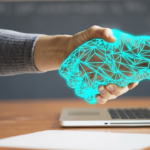-

How are we using GPT-4 Model for PDF Data Extraction?
At Docextrcator, we use cutting-edge technology like GPT-4’s advanced natural language processing capabilities to extract text and data from PDF documents or images, including tables, forms, header, footer and so on.
-

Unlocking the Power of LLMs: A Game-Changer for Document Processing in Enterprises
We at DocExtractor believe LLM based solutions are the next phase of technological advancement in the space. In this article we will unveil how LLMs are poised to revolutionise document processing, ushering in a new era of unparalleled efficiency and customer satisfaction.
About

AI-powered Intelligent Document Extraction for Smarter Business. Automatically extract printed text, handwriting, and data from any document.






